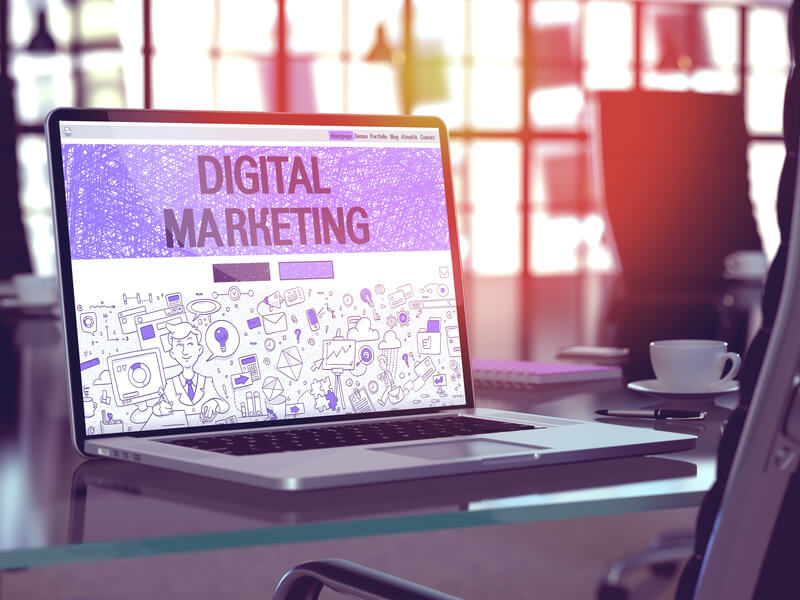
If we look at it globally, it is a struggle for the trust and attention of every person. That is, we must make it so that to turn “learned”, “liked” and “started to trust” in “tried”, “bought”, “bought again” and “recommended.
It is important to understand that marketing is a system, a business process capable of making a regular profit. Any business, regardless of its industry affiliation, today becomes a business on the principle of “online offline”. And the tasks of such marketing are focused on attracting customers online to further stimulate their actions offline.
That’s why Internet presence is so much more important now. For example:
- Whereas previously the main function of advertising was to generate sales or strengthen the image component, today they have to tell consumers about the Internet content created by the business (this site, corporate blog, social networks, feedback, etc.).
- If at one time, search engine optimization was considered primarily a function of the site, then today this set of activities should help in expanding the assets of the brand in various social networks.
- If before the generation of lids* mainly meant the transfer of messages, today the main task – to be in the right place at the right time.
- Whereas in the past the conversion of potential customers into customers involved many calls and information, today the process must include gathering information online and providing value to the customer.
- If in the past it was enough to show the name of the company, today it is important to show its reputation on the web, ratings and reviews.
That is, in modern times, a marketer needs to be in the center and move from the center. And then you can create a solid foundation for the next years.
Marketing goals and objectives
The purpose of marketing is to influence purchasing decisions. How do you influence decisions and build trust? – Through relationships with customers. The only open way to communicate with your audience is to provide them with complete and valuable content through the website, social networks.
Let’s think about it. A person’s behaviour is always determined by his or her goals.
Example: we buy drinks to quench our thirst, detergent to keep the house clean – and choose Ariel because we want to be good housewives (positioning advertising).
We buy a car because we want to come from point A to point B, and we choose the Volvo because we want to be as safe as possible (advertising message, brand positioning).
Conclusion: to understand people (your target audience (CA)), you need to know why they behave in one way or another, and to understand this, you need to know what their goals are.
Thus, products and brands are the tools with which customers achieve their goals. A product is a tool to accomplish a task.
Example: people do not need an 8 mm drill bit, they need to drill a hole of this diameter. In other words, a drill and a drill are needed to achieve the goal.
The advertising message will be aimed at solving the problem, the task is to achieve the goal. That is, knowing the problem and desires, you can manage solutions. This is the essence of marketing.
In other words, not individual tools of Internet marketing lead business to its ultimate goal – profit, and the tasks set.

For example, the task – not to order SEO, and increase traffic on the site, without reducing the quality of this audience. Do not order a Direct, and increase traffic on the site. Not to PR in social networks (senseless and ruthless), but to increase traffic on the site.
Almost everything boils down to getting more coverage of the audience to do the action we need.
Marketing funnels
There is a classic Marketing Funnel, i.e. it is the way to make a purchase decision. Its essence is to attract as many potential customers as possible at the top of the funnel and get a few active buyers in the narrow nude.
It is a certain principle of distribution of sales, from first contact to purchase.
- The top of the funnel – a person does not know yet that he has a problem or knows, but does not do anything, does not connect it with themselves and their plans.
- The middle of the funnel – the person actively collects information about what options exist, how much it costs, and so on.
- Bottom of the funnel – the person knows what he wants to buy (what will solve his problem), how much it costs, and already chooses who to buy from, studying the conditions, delivery, guarantees, etc.
For example. There is a product or service that we need to sell. Accordingly, they need to be reported, informed. Further to be interested by means of distinctive advantages, individual properties, by solving problems or issues. And if we were able to understand our CA and interest it, we get a sale. The client makes a purchase.
However, this is only the beginning of work with the client. For him to recommend it later, buy it as a gift to a friend or colleague – he should like it. He has tried, we need to know his opinion – motivation to write reviews, surveys, SMS or e-mail with an individual offer for a second purchase.
It is necessary to work with the buyer constantly, without losing sight of it. If we build the interaction correctly, we get a loyal customer who will recommend or make a repeat purchase in the future.
General statistics about users on the Internet, the number of Internet users is growing, increasing by 14% compared to last year.
The Internet and its technologies are spreading more and more across the country, there are more active Internet users, the number of users of social networks is increasing – the audience is expanding.
Many companies, advertising agencies, as well as medium and small businesses are increasingly looking at online advertising. By prioritizing online advertising over classical marketing and advertising in the media, on TV or radio.
Of course, quite from this we will not leave, but one thing is clear today – the classic format of advertising is evolving and adapting to the Internet technology.

